How to Train a Dog: The Complete Beginner’s Guide
Transparency matters to us! This post may include affiliate links, which means we earn a small commission if you make a purchase through our recommendations. This is at no additional cost to you. Read our full affiliate disclosure.
You’ve just brought home an adorable eight-week-old puppy who seems determined to chew everything except his toys, refuses to listen when you call his name, and has already had three accidents on your favorite rug. Sound familiar? Learning how to train a dog can feel overwhelming, especially when your furry friend appears to have selective hearing and boundless energy. The good news is that positive reinforcement training methods are proven to be more effective and humane than punishment-based approaches, and thousands of first-time dog owners successfully build strong relationships with their companions using science-backed techniques. Whether you’re dealing with a rambunctious puppy or an adult dog with established habits, the right training foundation can transform your daily life together from chaotic to harmonious. Your patience and consistency during these early training days will create the well-behaved, confident companion you’ve always dreamed of having by your side.
Key Takeaways
- Positive Reinforcement Works Best: Reward-based methods are more effective and humane than punishment, building trust while teaching desired behaviors
- Consistency Is Critical: Same commands and rules from all family members prevent confusion and accelerate learning progress
- Short Sessions Maximize Learning: 5-15 minute training periods prevent overwhelm and maintain focus, especially for puppies with limited attention spans
- Timing Matters: Immediate rewards create clear communication and faster learning, helping dogs understand exactly which behavior earned the reward
- Practice Makes Permanent: Training in different environments ensures reliable obedience as dogs learn to generalize commands across various settings
- Professional Help Available: Know when to consult certified dog trainers for complex behavioral issues or if progress stalls after several weeks of consistent effort
Understanding Dog Training Fundamentals
Dogs learn through positive association and repetition, making them incredibly responsive to reward-based training methods when applied consistently. Canine cognition research shows that dogs understand cause and effect relationships, which means they can connect their actions to consequences when the timing is clear and immediate. Understanding your dog’s natural learning process is essential for training success because it helps you communicate in a way that makes sense to them. Rather than expecting your dog to understand human logic, effective training works with their instinctual learning patterns to build reliable behaviors that benefit both of you.
Core Training Principles and Mindset
The foundation principles that make all training techniques more effective center on clear communication, patience, and realistic expectations. Dogs respond best to consistent, positive interactions that build trust rather than fear, which means your training approach should focus on showing your dog what you want them to do rather than punishing mistakes. Your mindset during training sessions directly affects your dog’s learning experience, so approaching each session with patience and enthusiasm will create better results than frustration or impatience. Remember that every dog learns at their own pace, and what works for one dog may need adjustment for another based on their personality, breed characteristics, and individual motivation.
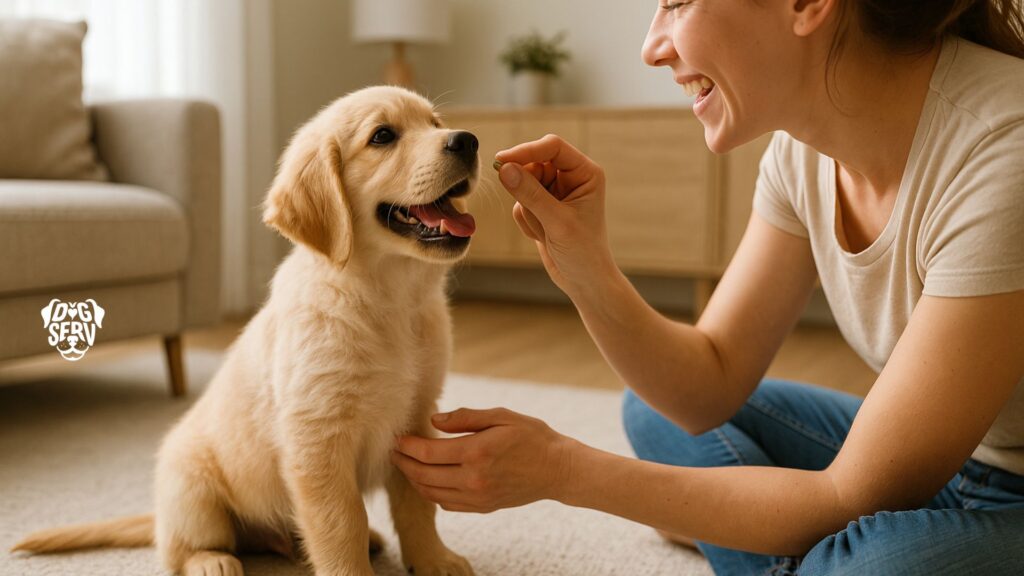
Positive Reinforcement Training
Positive reinforcement training uses rewards like treats, toys, praise, and life privileges to encourage desired behaviors, creating a learning environment based on trust and cooperation rather than fear or dominance. Scientific research consistently demonstrates that reward-based training methods are more effective than punishment-based approaches, leading to faster learning, better retention, and stronger human-dog bonds. When you reward your dog for good behavior, you’re not just teaching them what to do, you’re also building their confidence and strengthening your relationship. The key is finding what motivates your individual dog, whether that’s food treats, favorite toys, physical affection, or access to exciting activities like walks or playtime.
Implementation and Timing
Immediate reward timing is critical for effective positive reinforcement, with the most effective window being within 1-2 seconds of the desired behavior. When your dog sits on command, the treat should appear instantly, not after you’ve fumbled through your pocket or praised them extensively first. Use high-value rewards during initial training sessions, such as small pieces of cooked chicken or freeze-dried liver, then gradually transition to lower-value rewards or intermittent reinforcement as behaviors become reliable. Practice your reward timing during non-training moments so you’re prepared to mark good behavior the moment it happens, whether your dog spontaneously sits politely or chooses to lie down calmly instead of jumping on visitors.
Consistency and Routine
Dogs thrive on predictable rules, commands, and expectations because consistency helps them understand what’s required of them in different situations. Mixed messages from different family members can confuse learning and significantly slow progress, especially when one person allows behaviors that another person discourages. Your dog doesn’t understand that jumping on Dad’s work clothes is different from jumping on his weekend attire, so establishing clear, consistent rules prevents this type of confusion. Consistency also applies to your daily routine, feeding schedule, and exercise patterns, all of which help your dog feel secure and better able to focus during training sessions.
Family Training Alignment
Getting everyone in your household using the same commands and maintaining consistent expectations requires a family meeting before training begins. Everyone should agree on specific words for each command, such as deciding whether you’ll use “down” or “lie down,” and stick to those choices throughout training. Create a simple reference sheet with your chosen commands, rules about furniture access, feeding protocols, and consequences for unwanted behaviors so everyone can stay on the same page. If children are involved in training, ensure they understand the importance of following the established rules and teach them proper reward timing and command delivery to maintain consistency across all interactions.
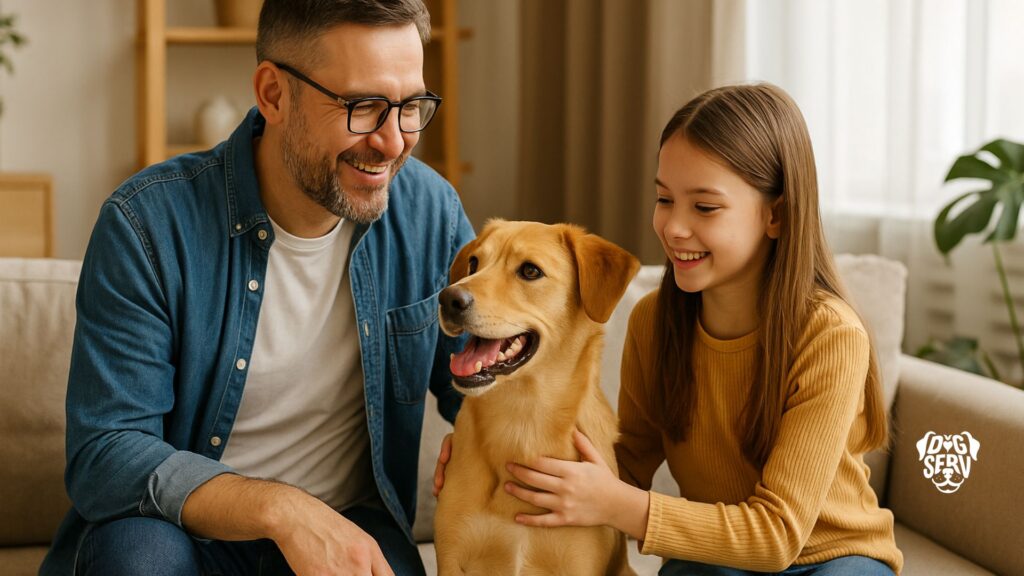
Short, Frequent Training Sessions
Canine attention spans are naturally limited, especially in puppies, making 5-15 minute training sessions much more effective than longer, intensive practice periods. Short sessions prevent mental fatigue and physical exhaustion, keeping your dog engaged and eager to participate rather than overwhelmed or frustrated. Multiple brief training sessions throughout the day provide more learning opportunities than one extended session, allowing your dog to process and retain information between sessions. Research shows that dogs learn better with frequent, short exposures to new concepts rather than marathon training sessions that can lead to stress and reduced performance.
Session Planning and Structure
Plan training sessions around your dog’s natural energy levels and daily routine, typically scheduling active training after meals when they’re alert but not overly excited. Morning sessions often work well because dogs are refreshed from sleep, while evening sessions can help reinforce the day’s lessons before bedtime. Structure each session with a brief warm-up using commands your dog already knows, introduce one new concept or refine an existing skill, and end with a successful repetition of something easy. Keep sessions positive and end on a high note, even if that means stopping before you’ve completed everything you planned if your dog is struggling or losing focus.
Teaching Basic Commands
Essential commands every dog should know include sit, stay, come, down, leave it, and heel because these foundation skills promote safety, facilitate daily interactions, and provide the groundwork for more advanced training. These basic commands serve as building blocks for all other training, creating a communication system between you and your dog that works in various situations from routine home life to emergency circumstances. Teaching basic commands also establishes your role as a benevolent leader who provides clear guidance and consistent rewards, which helps anxious or uncertain dogs gain confidence in new situations. The order in which you teach commands can vary based on your dog’s personality and your immediate needs, but starting with “sit” is often recommended because it’s relatively easy and creates a foundation for other commands.
Step-by-Step Command Training
Teaching “sit” begins with holding a treat close to your dog’s nose, then slowly moving it up and back over their head until their bottom naturally touches the ground. The moment their rear end hits the floor, mark the behavior with a verbal cue like “yes” and immediately provide the treat and praise. Once your dog reliably follows the treat into position, add the verbal command “sit” just before the luring motion, gradually phasing out the treat lure while maintaining the verbal cue and reward. For “stay,” begin with your dog in a sit position, hold your palm up in a “stop” gesture, take one small step back, wait 2-3 seconds, then return and reward if they remained in place.
Teaching “come” requires starting in a safe, enclosed area where your dog can’t ignore the command and get into trouble. Crouch down, say “come” in an enthusiastic voice, and reward generously when your dog reaches you, making coming to you the most exciting thing that can happen. Practice “down” by starting from the sit position, lowering a treat from their nose toward the ground, and patiently waiting for them to lie down completely before rewarding. The “leave it” command teaches impulse control by presenting a closed fist with a treat inside, only opening your hand and providing a different, better treat when your dog stops trying to get the first one.
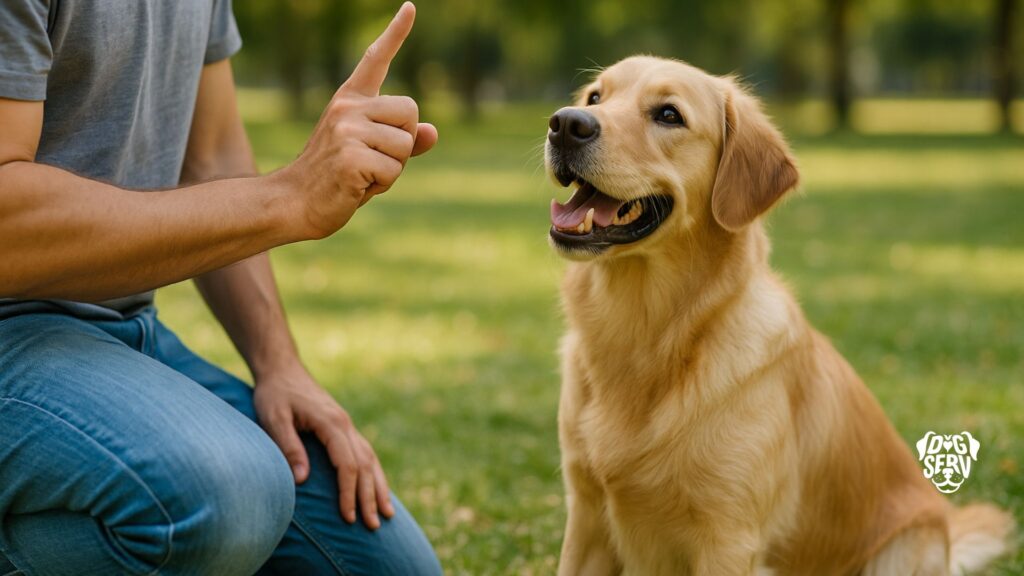
Housebreaking and Potty Training
Establishing reliable bathroom habits requires consistent schedules, constant supervision during the learning phase, and immediate positive reinforcement for successful outdoor elimination. Puppies typically need to go outside every 1-2 hours, as well as first thing in the morning, after meals, after naps, during play sessions, and right before bedtime. The key to successful housebreaking lies in preventing accidents through proactive scheduling rather than reacting to mistakes after they happen. Supervision is critical during the early stages because it allows you to recognize pre-elimination signals like sniffing, circling, or moving toward previous accident spots, giving you the opportunity to quickly redirect your dog outside.
Creating Successful Routines
Establish a consistent daily schedule that includes regular feeding times, water access, exercise periods, and designated potty breaks to help your dog’s digestive system develop predictable patterns. Take your dog to the same outdoor location each time and use a specific command like “go potty” to help them understand what’s expected in that location. Remain outside with your dog until they eliminate, then immediately provide enthusiastic praise and high-value treats to reinforce that outdoor elimination is highly desirable. When accidents happen indoors, clean the area thoroughly with an enzymatic cleaner to remove odor traces that might attract your dog back to the same spot, but avoid punishing or scolding as this can create anxiety around elimination.
Crate Training for Comfort and Security
Crate training provides your dog with a safe, den-like space that satisfies their natural instinct for a secure retreat while preventing destructive behaviors when you’re not available to supervise. The crate should never be used as punishment, but rather as a positive environment where your dog can relax, sleep, and feel secure. Proper crate training involves gradual introduction, positive associations with meals and treats, and appropriate sizing to ensure your dog has enough room to stand, turn around, and lie down comfortably without excess space that might encourage elimination. Dogs are naturally clean animals who prefer not to soil their sleeping area, making the crate an effective tool for housebreaking when used correctly.
Crate Introduction Techniques
Begin crate introduction by placing the crate in a common area with the door open, allowing your dog to investigate and enter voluntarily while you ignore the crate completely. Feed meals inside the crate with the door open to create positive associations, gradually closing the door for short periods while your dog eats, then opening it before they finish. Practice short confinement periods while you’re home, starting with just a few minutes and gradually increasing duration as your dog becomes comfortable, always ensuring they’ve had adequate exercise and potty breaks beforehand. Make the crate comfortable with appropriate bedding, and consider covering it partially to create a more den-like atmosphere, but avoid forcing your dog inside or using the crate when they’re overly excited or anxious.
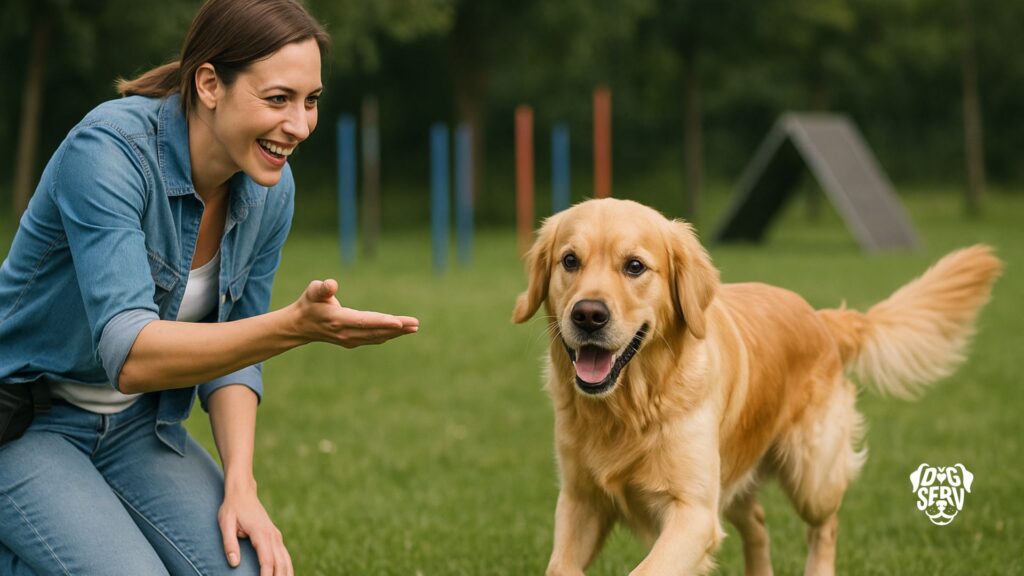
Leash Training and Walking Manners
Teaching loose-leash walking and proper outdoor behavior requires patience and consistency, starting with indoor practice before progressing to the exciting and distracting outdoor environment. Many dogs naturally pull on leash because they’re excited to explore, but pulling can be dangerous and uncomfortable for both dog and owner. The goal of leash training is to teach your dog that staying near you and maintaining a loose leash leads to forward movement and exciting experiences, while pulling results in stopped progress. Starting indoors helps your dog understand leash pressure and basic positioning without the overwhelming distractions of outdoor sights, sounds, and smells.
Progressive Leash Training Methods
Begin leash training by simply attaching the leash indoors and allowing your dog to drag it around under supervision, helping them become accustomed to the weight and feel of the equipment. Practice basic commands like “sit” and “stay” while your dog is on leash, rewarding calm behavior and teaching them that the leash doesn’t prevent normal activities. Start walking indoors, stopping immediately when your dog pulls and only moving forward when the leash is loose, using treats and praise to reward proper positioning beside your leg. Once your dog walks calmly indoors, progress to your yard or other enclosed outdoor areas before attempting neighborhood walks, always carrying high-value treats to reward good leash manners and redirect attention when distractions arise.
Socialization for Well-Rounded Dogs
The critical socialization period for puppies occurs between 8-16 weeks of age, during which positive exposure to various people, animals, environments, and experiences shapes their adult personality and confidence levels. Proper socialization prevents fear-based behaviors, aggression, and anxiety by teaching dogs that new experiences are generally safe and enjoyable when approached calmly. Well-socialized dogs are more confident, adaptable, and easier to train because they’ve learned to cope with change and novel situations without becoming overwhelmed or reactive. Even adult dogs benefit from continued socialization, though the process may require more patience and gradual exposure compared to the rapid learning that occurs during the puppy socialization window.
Safe Socialization Strategies
Create positive associations with new experiences by pairing them with high-value rewards and maintaining a calm, confident demeanor yourself, as dogs often mirror their owner’s emotional state. Start with less overwhelming experiences and gradually increase complexity, such as beginning with one calm, dog-friendly person before progressing to small groups or busy environments. Ensure your dog has an escape route and never force interactions if they seem fearful or overwhelmed, instead allowing them to observe from a comfortable distance while rewarding calm behavior. Puppy socialization classes provide structured environments for meeting other dogs and people under professional supervision, but verify that all participants are current on vaccinations and that the instructor uses positive training methods.
Clicker and Marker Training
Sound markers like clickers create precise communication that helps dogs understand exactly which behavior earned the reward, leading to faster learning and more accurate performance. The science of classical conditioning explains why marker training works so effectively: the distinct sound becomes associated with positive outcomes, creating a secondary reinforcer that can be delivered instantly even when treats or other primary rewards might be delayed. Clicker training allows for precise timing that’s often difficult to achieve with verbal praise alone, especially when teaching complex behaviors that require marking specific moments within a sequence of actions. The consistent sound also eliminates variables in your voice tone or timing that might confuse your dog during the learning process.
Clicker Training Implementation
Begin clicker training by “charging” the clicker, which means clicking and immediately providing a treat multiple times in a row until your dog clearly understands that the click sound predicts food rewards. Practice clicking at the exact moment your dog performs desired behaviors, followed immediately by treats and praise, gradually building your timing skills with simple actions like sitting or making eye contact. Once your dog reliably responds to the clicker, you can use it to shape more complex behaviors by clicking and rewarding successive approximations of the final goal, such as gradually raising the criteria for “down” from any lowering motion to a complete lying position. Remember that every click must be followed by a reward, even if you accidentally click at the wrong time, to maintain the marker’s reliability and effectiveness.
Common Training Mistakes to Avoid
Inconsistency in commands represents one of the most common training errors, such as using “down” sometimes and “lie down” other times, or allowing jumping behavior occasionally but discouraging it at other times. Delayed rewards significantly reduce training effectiveness because dogs can’t connect the reward to the specific behavior you want to reinforce when too much time passes between action and consequence. Punishment-based methods not only damage the trust between you and your dog but can also create fear, anxiety, and even aggression, making future training more difficult. Rushing the training process by advancing to more complex skills before your dog has mastered the basics often leads to confusion and frustration for both dog and owner.
Training when you’re frustrated, tired, or emotional rarely produces positive results and can actually set back your progress by creating negative associations with training sessions. Repeating commands multiple times teaches your dog to ignore initial requests, so it’s better to help your dog succeed by repositioning them or using a lure rather than saying “sit, sit, sit” repeatedly. Comparing your dog’s progress to other dogs can lead to unrealistic expectations, as every dog learns at their own pace based on factors like age, breed, previous experiences, and individual personality traits.
Building Training into Daily Life
Training opportunities exist throughout your regular daily routine, from asking for a sit before meals to practicing recall during backyard play sessions. Incorporating training into daily activities helps reinforce commands in real-life situations while providing multiple practice opportunities without requiring dedicated training time. Simple requests like waiting at doorways, sitting for leash attachment, or lying down during television time all contribute to your dog’s overall training while establishing polite household manners. This integration approach helps dogs generalize their training across different contexts rather than only performing commands during formal training sessions.
Regular life activities become more enjoyable when your dog understands basic expectations, such as walking calmly on leash during neighborhood strolls or settling quietly when visitors arrive. Use meal preparation time to practice “stay” commands, car rides to reinforce calm behavior in confined spaces, and playtime to work on recall and impulse control skills. Even grooming, vet visits, and household maintenance become easier when your dog has learned to accept handling and respond to basic commands that help them cooperate during necessary care activities.
Frequently Asked Questions About How to Train a Dog
Q: How long does it take to see results when training a dog?
A: Most dogs show improvement within 1-2 weeks of consistent positive reinforcement training, though complex behaviors may take several weeks to become reliable. Individual progress varies based on your dog’s age, previous experiences, and the consistency of your training approach.
Q: What if my dog doesn’t respond to treat rewards?
A: Try different motivators like favorite toys, praise, play, or life rewards such as access to walks or outdoor time. Some dogs are more motivated by social interaction or activities than food rewards, so experiment to find what your individual dog values most.
Q: Can older dogs learn new behaviors and commands?
A: Yes, dogs of all ages can learn with patience and appropriate positive training methods. While puppies may learn faster, adult and senior dogs are perfectly capable of acquiring new skills, though they may need more repetition and patience.
Q: How do I know if I need professional help with training?
A: Consider a certified trainer for aggression, severe anxiety, or if you’re not seeing progress after several weeks of consistent effort. Professional help is also valuable for first-time dog owners who want to establish good foundations from the beginning.
Q: What’s the difference between obedience training and behavior modification?
A: Obedience training teaches specific commands like sit, stay, and come, while behavior modification addresses problem behaviors such as excessive barking, destructive chewing, or separation anxiety. Both approaches use positive reinforcement methods but focus on different aspects of your dog’s education.
Q: Should I train my dog myself or enroll in classes?
A: Both approaches have benefits, and many successful dog owners combine self-directed training with professional guidance. Group classes provide socialization opportunities and expert instruction, while home training allows you to address specific issues in your environment.
Ready to Build an Incredible Bond Through Training
Learning how to train a dog successfully requires patience, consistency, and a commitment to positive methods that build trust rather than fear. Science-based training approaches create lasting behavioral changes while strengthening the relationship between you and your canine companion. Remember that every small victory deserves celebration, whether your dog masters their first “sit” command or finally walks calmly on leash past the neighbor’s cat. Training is not about creating a perfectly robotic companion, but rather about establishing clear communication that allows you both to enjoy life together safely and harmoniously.
Your training efforts will pay dividends throughout your dog’s life, creating a well-behaved companion who can accompany you on adventures, welcome visitors gracefully, and respond reliably in emergency situations. The foundation you build during these early training sessions becomes the basis for a lifetime of learning and growth together. At DogServ, we understand the deep bond that develops between dogs and their families through positive training experiences. Whether you need expert guidance, quality training supplies, or simply want to connect with other dog lovers who share your commitment to positive training methods, we’re here to support every step of your training experience and help you build the incredible relationship you’ve always dreamed of having with your four-legged family member.
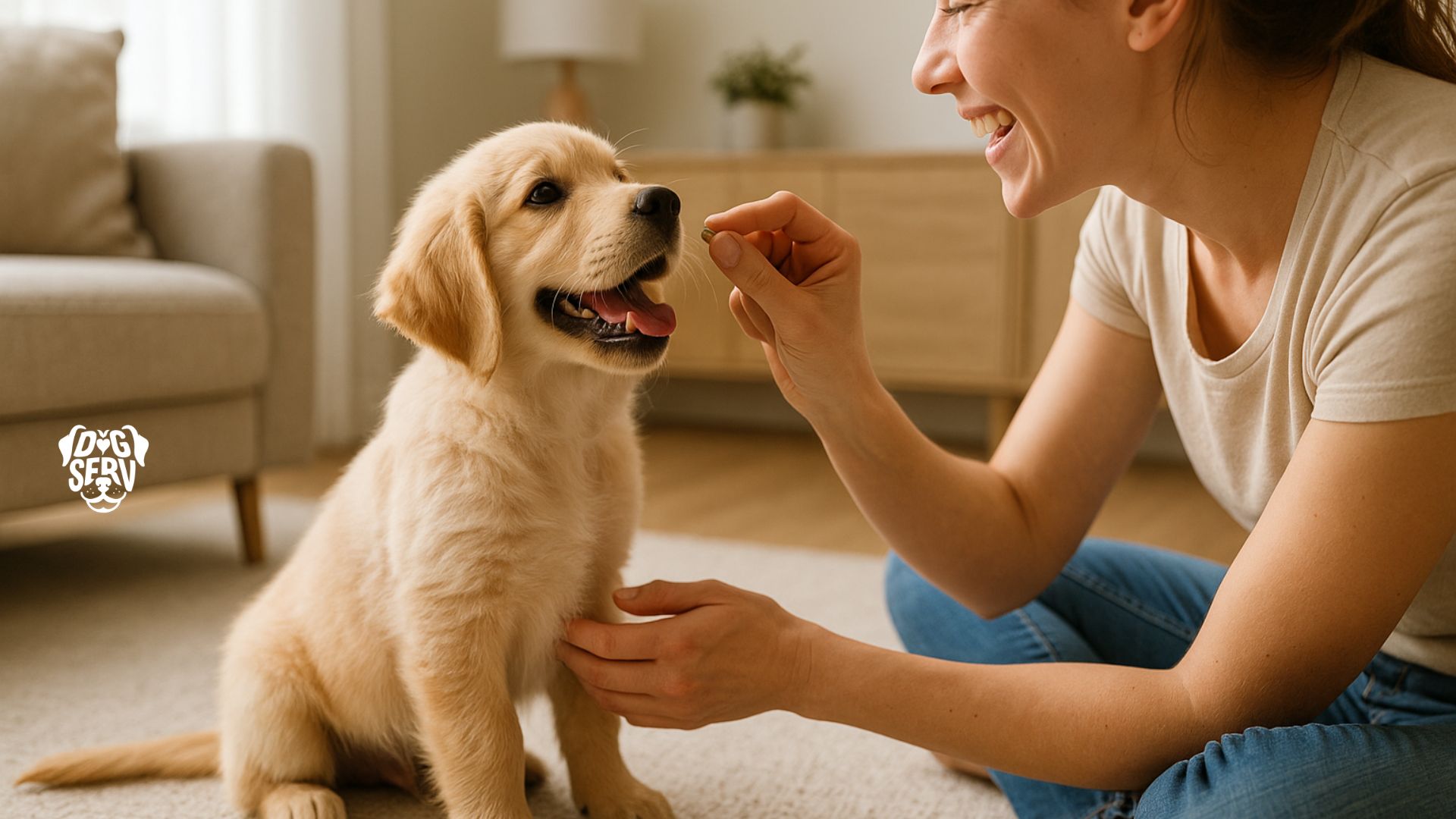
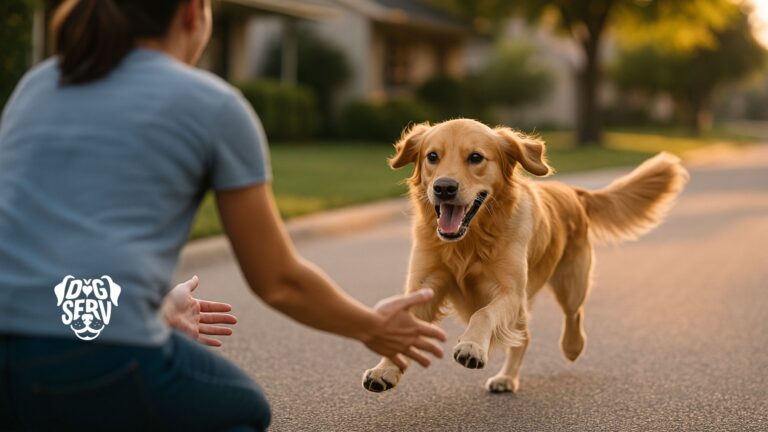
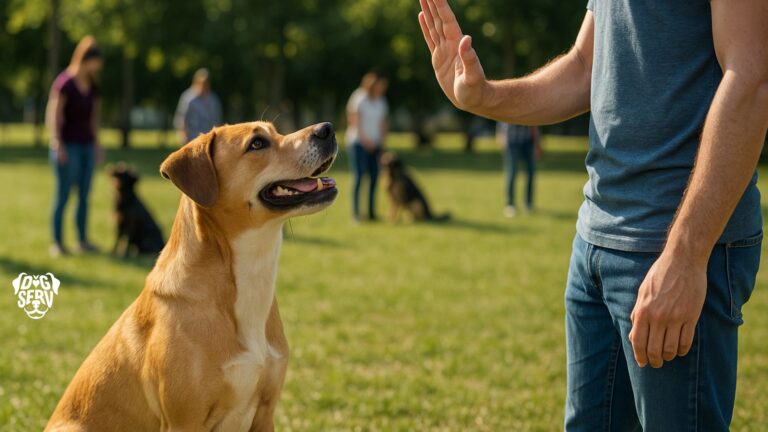
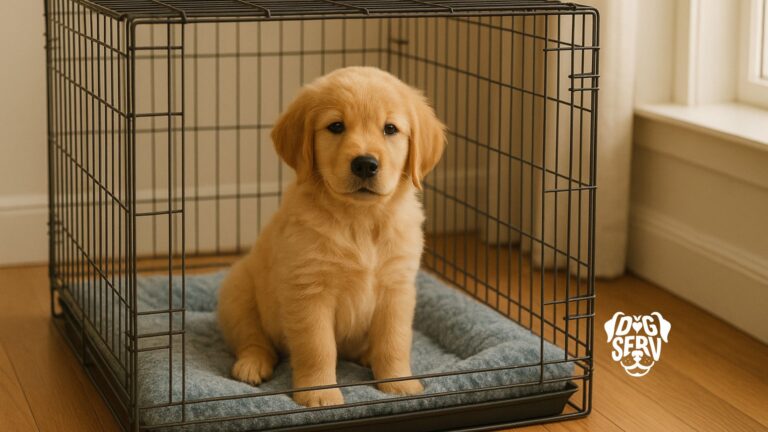
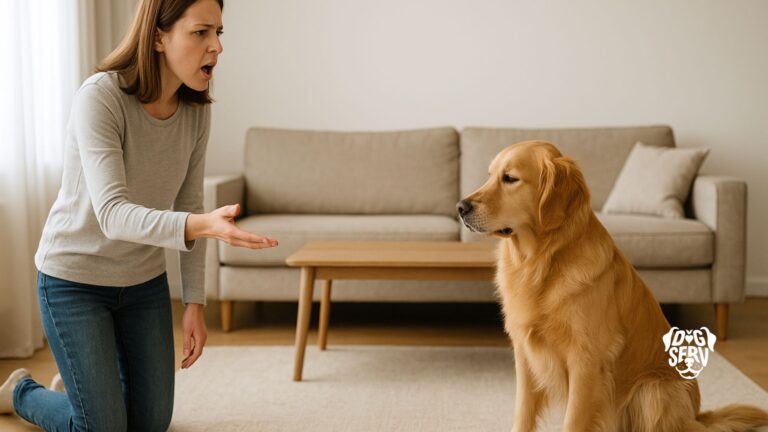

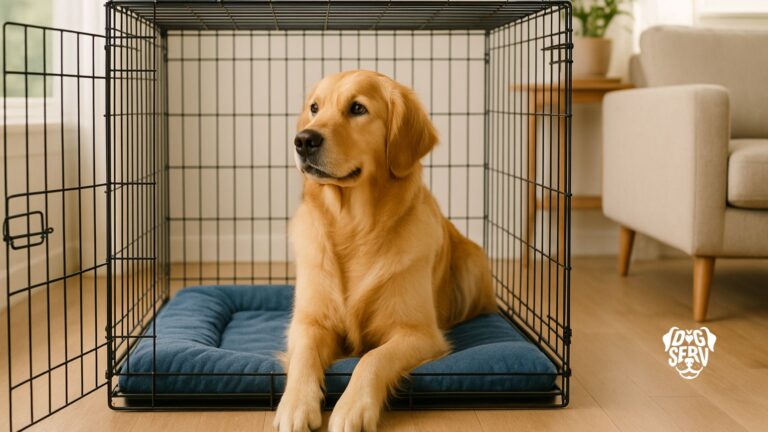
Calvin Hewitt is the primary author and driving force behind DogServ, bringing over 27 years of business expertise and 7 years of specialized digital marketing experience to the dog service industry. As the founder of Web Leveling and architect of DogServ’s evolution from a simple directory to a comprehensive one-stop shop for dog lovers, Calvin has created highly performing dog training websites in competitive markets, developed popular applications like “Can My Dog Eat?” and “Puppy Planning Checklist,” and generated thousands of monthly page views with his dog service content. Based in the Houston area but serving dog lovers and service providers nationally and internationally, Calvin works alongside a dedicated team of seven professionals, combining analytical rigor from his banking and energy industry background with a genuine passion for connecting dog owners, dog lovers, and service providers through quality content, innovative applications, and trusted recommendations.